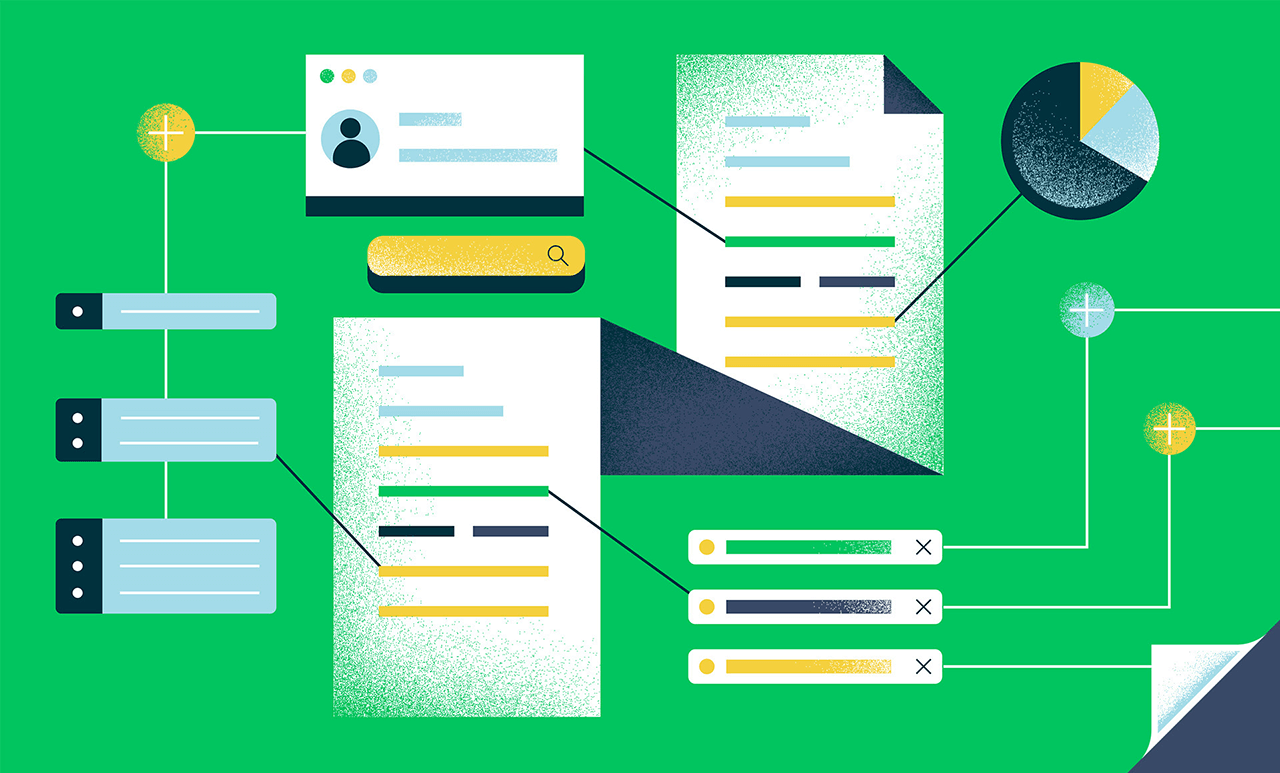This article is the second of a series of four that focuses on key industry trends that are driving and enabling a scalable approach to legal work with the help of AI.
Part 1 of this series focused on the ways that collaboration can help lawyers scale their work, using Kira Systems’ Smart Field Sharing capability as an example. In this second part, we’ll address the role that today’s Knowledge Management (KM) practices play in helping lawyers scale and leverage their work, and how Smart Field Sharing fits in with trends in the KM field.
The Growth of Knowledge Management
Legal organizations are among the most knowledge-centric types of businesses. Much of a law firm’s assets consist of the contents of their lawyers’ brains. As the cliché goes, all of those assets walk out the door every evening (a cliché that has been somewhat modified by COVID-19 - today most of those assets are “out the door” 24/7 under work from home policies).
As clients demand more efficient legal services for less money, legal organizations have created KM functions that ensure that the organization’s existing legal knowledge is captured, preserved, and leveraged efficiently - so that those intellectual assets remain even if individuals might move on. KM is a term for a very diverse set of practices whose goal is to maximize the value of all that domain expertise, by enabling organizations to capture, store, and re-use it.
KM teams work on identifying expertise; standardizing processes and work product so it can be easily reused; managing an organization’s documents and data resources; and leveraging technology to store and re-create knowledge for application with new clients.
KM has become a growing profession within the legal space, particularly in large law firms. For example, attendance at KM Legal, a KM conference hosted by the Ark Group each year, has doubled in attendance over the past 10 years. Most larger firms have someone with a title such as Director of KM or even Chief Knowledge Officer, staffed with various professionals who are responsible for maintaining the firm’s knowledge assets.
Traditional KM Techniques
KM is not really new, even if the term “Knowledge Management” has only been in common use since the 1980’s. In the legal field, one of the most common forms of KM is the precedent database. These were around for decades, prior to digital media, in the form of contracts, forms, pleadings and other legal documents that a legal organization had produced once and squirreled away in a file cabinet for future re-use.
Processes around those document precedents were manual, of course, but eventually many of them were integrated into word processing systems and other early forms of legal technology.
New roles have developed around KM, in particular the role of PSL (Professional Support Lawyers), which developed in the UK and has been adopted elsewhere. These are non-partner-track lawyers, skilled at research and maintaining the firm’s precedents and other forms of work product so that it can be leveraged in the future.
Digitization allowed further development of KM tools, including expertise and experience databases, which allow organizations to track “who knows what” across various criteria, and practice portals, which organize an organization’s knowledge resources and make them available to professionals, often organized around practice group specialties.
Newer Forms of KM Begin to Involve Technology and Automation
In more recent years, technology has enabled new forms of KM that help ensure that the know-how embedded in an organization can be fully leveraged.
Document management and document automation have come a long way in recent years, allowing the retrieval of prior work product and the creation of new documents that are based on a firm’s own specialized expertise.
Enterprise search became a common solution to the problem of accessing documents hidden away in various silos; search technology has made it easier to track down precedents and work product. Even here, however, technology has its own limitations, including a sense of “information overload” and the difficulty (familiar to any Google user) of finding the right document in a flood of relevant documents.
The role of the PSL was the model for technology-based know-how services such as Thomson Reuters’ Practical Law, which provides standardized approaches to various kinds of legal tasks, and deliver tools such as forms, checklists, and strategies that help practitioners avoid re-inventing the wheel with each new matter.
All of these techniques involve enhancing the ability of lawyers to re-use their expertise; to work once, but serve clients many times.
The Latest: Leveraging AI to Improve KM
As Artificial Intelligence and Machine Learning make inroads in many aspects of legal practice, KM is no exception.
Specifically, AI-based tech is improving KM in tools like:
- Matter intake and matter management - Lawyers are using chatbots to automate some of the collection of client data at the front end of engagements, and machine learning to handle some of the back end processes such as classification, extraction of data from documents, etc.
- Pricing, billing, and budget analysis - Machine learning is being leveraged to analyze timekeeping and billing data to accurately price legal services, and to match the right matter to the right resource.
- Customer-facing expert systems - KM is not just for sharing expertise inside an organization. Many law firms and in-house legal departments are providing self-help tools that let clients obtain answers to routine legal questions. This is also a form of KM - embedding domain expertise in a more efficient package than a one-on-one personal encounter with a lawyer.
Smart Field Sharing and KM
As a way to capture lawyer expertise, Kira’s new Smart Field Sharing capability is also a form of KM. Smart Field Sharing allows lawyers to embed their specific legal domain expertise in machine learning models and re-use that knowledge across their organizations.
In Part 1 of this series, we likened lawyers to musicians in the pre-recorded music era. The traditional model of legal services, because it is based on a one-to-one delivery of expertise, is like the delivery of music prior to the invention of the gramophone. Legal work was like a live performance, that couldn’t be replicated without repeating the performance.
To continue the metaphor in KM terms: Kira’s out-of-the-box standard smart fields are like folk songs, the tunes that everyone knows as standards derived from a musical tradition. Assignment clauses and termination clauses are among the most commonly used smart fields; all lawyers that do significant amounts of contract review “know those tunes,” and the standard fields are heavily relied upon.
When lawyers use Quick Study to create their own custom fields, however, it’s like they are becoming songwriters, putting their own imprint on the music. Custom smart fields allow Kira users to analyze and extract information from contracts based on their individual, specialized expertise. For example, lawyers who work across multiple geographies in which several languages are used might create custom fields in those languages that will extend Kira to contracts written in those languages. Or a lawyer who works in a specific industry might regularly work with contracts that use provisions that are unique to that industry. Creating a custom smart field to extract those provisions captures that unique industry expertise and preserves it for re-use in other document reviews.
Now, with Smart Field Sharing, lawyers can make that captured expertise available to colleagues in a way that very much fits in with this growing practice of KM in legal organizations. In the spirit of KM, Smart Field Sharing is not just about sharing and collaboration, but also about standardizing and streamlining a specific approach to a legal problem for the benefit of an entire organization.
The next article in this series will focus on the relationship between Smart Field Sharing and another important trend in the legal industry, the disaggregation of legal work.



